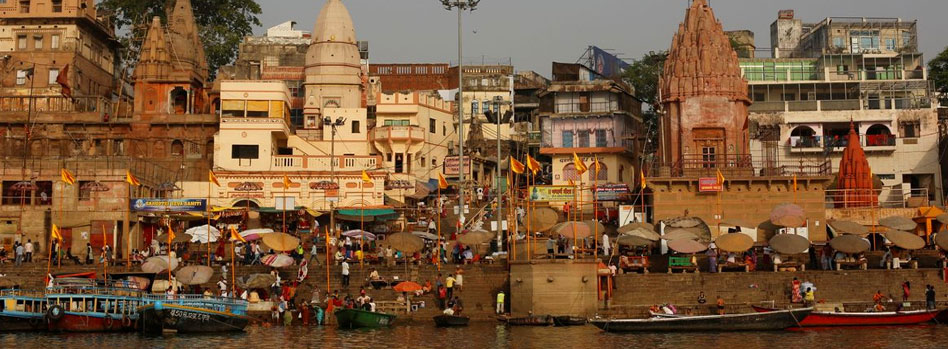[By Tushar- 20/05/24]Varanasi also known as Kashi or Benaras, is one of the oldest and most sacred cities in India, revered as a significant religious and cultural hub for Hindus. The city is situated along the banks of the holy Ganges River which is lined with numerous ghats. These ghats are central to the spiritual life of Varanasi, serving as places for ritual bathing, religious ceremonies and the famous cremation rites. Varanasi is considered the earthly abode of Lord Shiva, one of the principal deities of Hinduism. It is believed that Lord Shiva founded the city and that it has existed since time immemorial. The Kashi Vishwanath Temple dedicated to Shiva is one of the most revered temples in India and attracts millions of devotees each year.The Ganges or Ganga is considered a goddess in Hinduism and is believed to have descended from heaven to earth to purify the souls of humans. Bathing in the Ganges at Varanasi is thought to cleanse one of sins and aid in the journey towards salvation. The river’s presence amplifies the city's sanctity and spiritual allure.Here are some of the most popular ghats in Varanasi:

DashashwamedhGhat is one of the most prominent and vibrant ghats in Varanasi. Located on the banks of the Ganges River, this ghat is a focal point of religious activities, attracting pilgrims, devotees and tourists alike. DashashwamedhGhat is steeped in mythology and history. According to Hindu legends, it is believed that Lord Brahma performed the "DashashwamedhaYajna" here to welcome Lord Shiva. This yajna is considered one of the most significant Vedic rituals, symbolizing power and purification. The evening Ganga Aarti at DashashwamedhGhat is a major attraction. Priests perform a synchronized ritual involving the use of large brass lamps, incense and conch shells accompanied by chanting and hymns. This elaborate ceremony is a tribute to the Ganges River and is attended by hundreds of people daily.
ManikarnikaGhat is one of the most revered and significant ghats in Varanasi known primarily as a sacred cremation ground. Its importance in Hinduism is profound, rooted in mythology, religious beliefs and cultural practices. According to Hindu mythology, the ghat derives its name from the "ManikarnikaKund," a sacred well believed to have been dug by Lord Vishnu. The story goes that while Lord Shiva and his consort Parvati were bathing in the kund, Shiva’s earring (manikarnika) fell into the well. It is believed that Lord Shiva whispers the Taraka Mantra ("Rama") into the ears of the deceased at ManikarnikaGhat, ensuring their salvation and liberation from the cycle of birth and rebirth (moksha). The pyres at ManikarnikaGhat burn continuously, 24 hours a day, symbolizing the cycle of life and death. The sight of these funeral pyres with bodies being cremated along the riverbank is a stark and powerful reminder of mortality and the Hindu belief in the transient nature of life.
AssiGhat is one of the most popular and culturally significant ghats in Varanasi known for its serene atmosphere and spiritual activities. Located at the confluence of the Ganges River and the Assi River, it holds a special place in the hearts of both locals and visitors. According to Hindu mythology, the ghat is named after the Assi River, which flows into the Ganges at this point. It is believed that Goddess Durga, after slaying the demon Shumbha-Nishumbha, threw her sword away and it created the Assi River. The ghat is also associated with Lord Shiva. It is said that he rested here after his victory over the demon. The ghat is famous for its daily Ganga Aarti rituals. The morning Subah-e-Banaras program includes a classical music performance, yoga sessions and chanting, followed by the aarti. The evening aarti is a captivating event, drawing crowds who come to witness the ritualistic offering of lamps to the Ganges. Boat ride in Varanasi is the best option to explore all these ghats. Varanasi Boat Tickets can be booked online to avoid last time rush and disappointment.